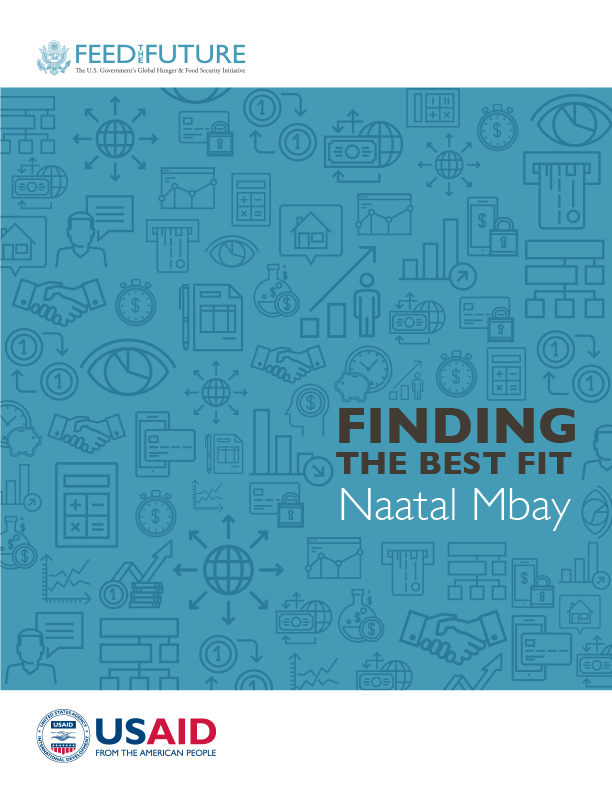- What We Do
- Agriculture and Food Security
- Democracy, Human Rights and Governance
- Economic Growth and Trade
- Education
- Environment and Global Climate Change
- Gender Equality and Women's Empowerment
- Global Health
- Humanitarian Assistance
- Transformation at USAID
- Water and Sanitation
- Working in Crises and Conflict
- U.S. Global Development Lab
Speeches Shim
![]() (1 MB) Naatal Mbay Case Study
(1 MB) Naatal Mbay Case Study
Naatal Mbay
This case study is part of a series highlighting the integration of digital technologies into agricultural programs. Over the past ten years, and particularly over the past five, the use of mobile phones and Internet-based, digital tools in farming activities has sky-rocketed. This is largely due to the widespread adoption of mobile phones in developing and emerging markets, coupled with the increased spread of 3G and 4G connectivity. What has emerged is a broad set of digitally-based applications that have driven greater financial inclusion, more precision agriculture, better data collection and analytics, and more effective information dissemination. Agricultural organizations and programs are increasingly embracing these tools to advance their goals. Each case study in this series looks at different approaches to adoption and how the tools are impacting organizational culture, operations, and programming.
Naatal Mbay is a four-year (2015 – 2019), $24 million Feed the Future Senegal project with the primary objective of scaling up and expanding successful value chain approaches. The project builds on several earlier USAID/Senegal investments, most notably the Economic Growth Project (Projet Croissance Economique, PCE) active between 2009 and 2015. Naatal Mbay, which in Wolof means “making agriculture prosperous,” aims to expand the number of small-scale cereal farmers benefitting from the project, with the goal of reaching 150,600 households, an estimated 45 percent of households in the Feed the Future zone of influence. It will achieve this by strengthening the production, processing, and marketing aspects of four (4) value chains in two (2) main geographic areas: the Senegal River Valley (SRV), including the Delta and the Middle Valley, and the South Forest Zone (SFZ), composed of the central peanut basin and Casamance. The targeted value chains are: irrigated and rain-fed rice, maize, and millet.
A unique feature of the Naatal Mbay project is the way it is using digital tools to support locally-owned and sustainable data collection and analysis. The approach to digital integration in the project is marked by its simplicity. A basic set of digital technologies, mainly laptops loaded with Microsoft Office, enable value chain actors to leverage the power of data to better serve farmers, monitor activities, increase transparency along the chain, and attract investment. The approach earned a Data to Action Recognition Award by the U.S. Global Development Lab within USAID in 2014, acknowledging the project’s modest yet effective way of incorporating data innovations to increase impact (USAID 2015a). This case study tells the story of how Naatal Mbay is using digital tools to empower farmer-serving organizations and firms active in the rice, maize, and millet value chains and strengthening the relationships and links between these organizations and other stakeholders. It draws heavily from information about PCE which introduced many of the digital innovations that Naatal Mbay is taking to scale. The case study begins with an overview of the digital landscape in Senegal. Then it describes the project’s overall approach to digital integration and specifically its experience introducing various digital tools and approaches into the targeted value chains. It reviews the impact of digital tools on Naatal Mbay’s partners and targeted value chains, and offers lessons learned about its digital integration experience drawn from the reflections of various stakeholders.


Comment
Make a general inquiry or suggest an improvement.